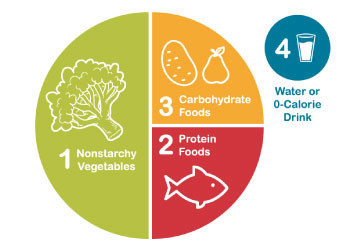Food Plays a Powerful Role in Health and Wellness
November 3, 2021
by Abby Tibodeau, RD, LD, CDCES

Mankato Clinic Diabetes Care Center
One of the first questions I get when people are diagnosed with diabetes is: What can I eat? As a certified diabetes care and education specialist, this is one of my favorite questions!
I typically begin with helping people understand what eating for better health means. This includes boosting energy levels and feeling better, eating when hungry and stopping when satisfied, improving blood sugar levels, and reducing risk for other health issues like heart disease. Eating for better health does not mean eating special foods or following a diet. Many people have tried a diabetes diet with rigid rules only to find that it didn’t work long term. Don’t blame yourself!
A new approach to diabetes management focuses on improving your overall well-being. Mindful eating means increasing awareness around food choices. Becoming more mindful may help you to better understand your relationship with food, increase your enjoyment around eating and develop healthy habits. Here are some tips I often share with patients to practice more mindful eating.
- Limit distractions: Turn off the TV, phone or computer. This allows you to focus on the food and increase your awareness of your body and senses.
- Slowing down: This allows you to experience the smell, taste, and textures of your foods and increase the satisfaction factor.
- Share the experience: Cooking and eating with others can be an enjoyable event.
There are many different approaches to eating to support diabetes management. The American Diabetes Association gathered a panel of experts to review over 600 research articles over the course of five years to see what eating patterns work well for people with diabetes. The main finding from the ADA’s Nutrition Consensus Report was that everyone’s body responds differently to different types of foods and there is no single diabetes diet. This research led to the Diabetes Plate Method.

- Nonstarchy vegetables are high in vitamins, minerals and fiber. Think leafy greens and salad greens, asparagus, broccoli or cauliflower, cabbage, carrots, celery, cucumber, green beans, tomatoes and peppers.
- Protein foods: Lean proteins including chicken, turkey, eggs, salmon, lean pork and beef cuts, such as tenderloin. Try plant-based proteins like beans, hummus and nuts.
- Carbohydrate foods: Foods higher in carbohydrates include grains and starchy vegetables like potatoes. Whole grains such as brown rice, popcorn, quinoa and whole grain breads, pastas and tortillas are recommended. Starchy fruits and veggies include winter squash, peas and bananas.
- Water or 0-calorie drink: Water is the best choice. You can also enjoy sparkling water, unsweetened tea and coffee, hot or iced.
Of course, not everything fits neatly into the Diabetes Plate Method. Like hot dishes, soup and pizza! When eating pizza, try filling half your plate with pizza and the other half with salad. When making your favorite hot dish or soup, load it with extra veggies and try whole grains such as wild rice or brown rice.
The Diabetes Plate Method is an easy place to start and gives you freedom to decide how to fill your plate. Your hunger and fullness cues guide the way to help you choose what to eat and how much. This is a simple way to eat healthy that can benefit everyone.
To learn more about diabetes services, visit the Mankato Clinic Diabetes Care Center.
To learn more about diabetes, visit the American Diabetes Association.